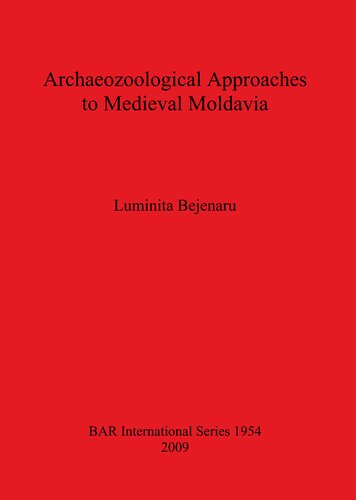

Most ebook files are in PDF format, so you can easily read them using various software such as Foxit Reader or directly on the Google Chrome browser.
Some ebook files are released by publishers in other formats such as .awz, .mobi, .epub, .fb2, etc. You may need to install specific software to read these formats on mobile/PC, such as Calibre.
Please read the tutorial at this link: https://ebookbell.com/faq
We offer FREE conversion to the popular formats you request; however, this may take some time. Therefore, right after payment, please email us, and we will try to provide the service as quickly as possible.
For some exceptional file formats or broken links (if any), please refrain from opening any disputes. Instead, email us first, and we will try to assist within a maximum of 6 hours.
EbookBell Team

0.0
0 reviewsIn this work the author correlates animal history with the evolution of human society and with the ecological transformations in mediaeval Moldavia, revealing the role played by animals in the life of mediaeval communities, the exploitation strategies employed, the dynamics of the morphology, and the distribution of various animal species in mediaeval Moldavia. The objectives in view were: to evaluate the animal resources and the purposes of their use in various mediaeval settlements in Moldavian; to identify consumer diversity depending on the geographical, ethnical and religious factors on the urban or rural environment; to describe different animal species identified starting from the archaeozoological samples and to establish certain racial types of domestic animals in mediaeval Moldavia on the basis of the correlation of archaeozoological and historiographical data, as well as present-day zootechnological data; to estimate the ways in which animals were utilized (age, gender, butchering methods, etc.). The work is presented in four chapters, followed by conclusions, bibliography, and appendices of metric data inventories. The first chapter presents the general study framework and background on previously published data. Chapter two provides a general description of the archaeozoological samples on which the synthetic analysis is founded. Chapter three is an investigation of the animal resources used in mediaeval Moldavia. Chapter four contains the osteometric description of the domestic animal species identified in the archaeological samples.